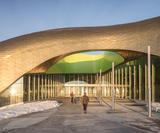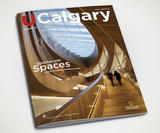
What’s in a Name?
When it relates to Indigenous peoples, it turns out a lot
by Deb Cummings
Sometimes, I fear that important conversations are being stifled due to the fear of using the “wrong” word. Especially when it relates to Indigenous peoples — or is it people? Or should I say aboriginal or native? And do I capitalize those terms?
Language and terminology are far more than just words and so navigating them, especially when we factor in power dynamics and colonial histories, is tricky and complex — precisely why we popped in to UCalgary’s Native Centre to chat with aboriginal student advisor Keeta Gladue.
This might be a good place to start. I thought “native” and “aboriginal” were outdated and offensive terms, not to be used?
Terms and titles like these show a system in flux. But the title of the Native Centre is a good example of how we don’t make snap decisions about altering titles and names.
Here at the university, changing titles at an institutional level is thoroughly examined for cultural protocols and conversations are had with traditional knowledge keepers before changes are made. Although we are in discussions now, we are also respectful of its history — the Native Centre has been on campus for 40 years where we have supported, and continue to support, a lot of Indigenous and non-Indigenous students.
But what is the right terminology we should currently use?
Be as specific as possible. If you know a person is Cree, say Cree; if they are Métis, say that. And don’t be afraid to ask how they self-identify. If you don’t know, the globally accepted term is Indigenous, meaning people of the land. “Native” is a general term that refers to native of the land, but does not denote a specific ethnicity. “Aboriginal” was a government-imposed term, but can be confused with the Indigenous people of Australia.
How important is language in communication?
Very, as language creates a foundation, but it doesn’t start with a dictionary or glossary of terms. It begins with a story. And that story can lead to relationship-building . . . we can’t forget that.
If someone wanted to read a book about Canada’s history and complex relationships with Indigenous people, what would you recommend? Start with The Inconvenient Indian by Thomas King, or The Marrow Thieves by Cherie Dimaline.
Some people seem to struggle with the practice of land acknowledgements that recognizes the traditional territory of the Indigenous people. What is its purpose?
It’s a reminder as to where we are and that there is a history here. And, secondly, if it makes someone a little uncomfortable, just a little . . . well, I think that’s OK. It is in that space of discomfort where learning occurs. I guarantee that every day in Canada, Indigenous people wake up and live in a world they did not create for themselves and they are deeply uncomfortable. Being a little uncomfortable gives us a space to learn.
Does UCalgary offer any programs that would help if you were working with Indigenous peoples?
People can enrol in the Indigenous Relations Training Program, offered by the Native Centre. Similar to a block week, there are eight three-hour modules that are spread out over four days. Topics range from a historical overview to current Indigenous issues in Canada that span environmental and economic matters across Canada. The next one will run May 7-10, 2019. There all sorts of other ways to bridge cultural gaps, from attending a powwow to checking out our events that we post at ucalgary.ca/nativecentre.
There all sorts of other ways to bridge cultural gaps, from attending a powwow to checking out our events that we post at ucalgary.ca/nativecentre. You can learn more about UCalgary’s Indigenous Strategy, ii’ taa’poh’to’p, and its many activities and opportunities by visiting www.ucalgary.ca/indigenous-strategy

The Future of Architecture
Right in the heart of downtown, UCalgary’s Faculty of Environmental Design recently opened a 29,000-square-foot satellite campus, a.k.a. the City Building Design Lab (CBDL). Explore the spaces being designed and shaped by UCalgary Alumni.

How Do We Protect the Most Vulnerable?
With a willingness to take on entrenched and challenging urban issues, UCalgary alumni, students, faculty and researchers are assisting those who live on the margins.

Notebook
What’s transformed the Dining Centre is far more than a slap-happy menu makeover; we asked Vivek Shraya for her ideal party-invite list; gatecrashing the art gallery world; what’s in a name when it relates to Indigenous peoples; inside the mind of a literary icon.

Can’t Get Enough?
From splashy architectural photo spreads of some of Calgary’s most-talked-about new buildings to the complexities we face in caring for society’s most vulnerable — this issue explores UCalgary’s reach around the city and beyond.
